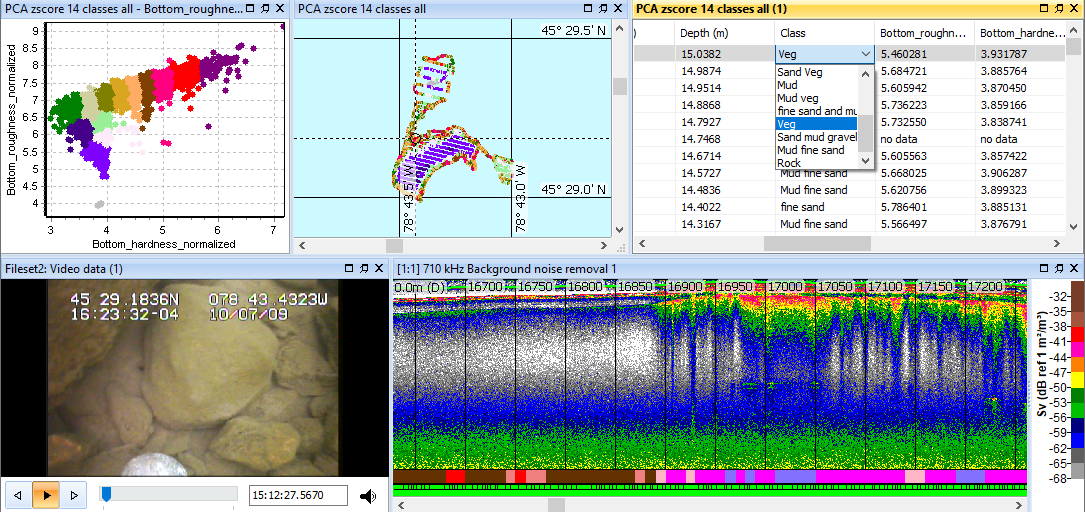About bottom classification
Bottom classification is the process of partitioning acoustic Sv bottom returns into discrete classes for sediment and bottom types. This information can then be used independently (unsupervised classification) or can be correlated (supervised classification) to environmental or geophysical or biological features.
Acoustic bottom classification is considered to be more cost effective than the collection of extensive grab samples or comprehensive visual verification. Unsupervised classification is subject to the caveats and limitations underlying the classification algorithms and the echosounder or sonar data. Classes may be relatively self-consistent but the translation to a meaningful descriptor is absent. Supervised bottom classification is also subject to the same caveats however the correlation to ground truth data (direct samples and\or visual verification) can raise the level of confidence and may provide a mapping of observed types to derived classes for calibrated echosounders.
Echoview offers classification algorithms for the bottom classification of single beam data. The output is a bottom points variable.

(Above) Scott Lake bottom classification with fourteen substrate classes. Bottom points graph, bottom points cruise track, bottom points table with Class list, video and Sv echogram with bottom points integram. Thanks to Milne Technologies for the echogram and video data.
Bottom classification algorithms output bottom points data that may be displayed in a:
- Table
- Graph
- Integram
- Cruise track
- Exported .csv file.
Onscreen integration results may also display selected bottom feature values.
Bottom points data integrates smoothly with existing Echoview features like the Media window, the region browser and auto-synchronization between echogram, cruise track and video. Use information from grab studies, geological maps and video footage to help you optimize and ground-truth Echoview bottom classifications.
See also
Configuring a bottom classification
Habitat Classification module
Bottom classification analysis options
Bottom classification algorithms
Bottom classification - practical notes